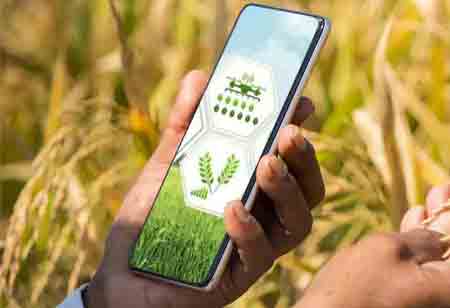Thank you for Subscribing to Agri Business Review Weekly Brief
What is the Role of IoT in Agriculture
The adoption of technology in agriculture has reached unprecedented levels.

By
Agri Business Review | Tuesday, April 18, 2023
Stay ahead of the industry with exclusive feature stories on the top companies, expert insights and the latest news delivered straight to your inbox. Subscribe today.
There are numerous advantages to IoT in agriculture, such as reducing waste, managing costs, and producing high-quality products.
FREMONT, CA: The adoption of technology in agriculture has reached unprecedented levels. Agriculture has many emerging technologies that seem very promising for the future. With widespread adoption, IoT has taken a mainstream position in agritech. By definition, IoT in agriculture is simply the Internet controlling things.
IoT technology is used when we use our smartwatch to count calories or ask Alexa or Siri to calculate pie values. Data can be transferred over a network by IoT devices.
Using sensors and automating irrigation systems, IoT smart agriculture products can monitor crop fields. Thus, farmers and associated brands can monitor field conditions from anywhere at any time.
Here are some examples of IoT solutions used in agriculture:
The role of drones in agriculture: In agriculture, drones are used for crop monitoring, crop spraying, soil analysis, and mapping. Agriculture is one of the essential sectors that incorporate drones. For imaging, mapping, and surveying farms, drones equipped with sensors and cameras are used. Drones can be either ground-based or aerial. Drones on wheels survey fields on the ground. Informally known as unmanned aerial vehicles (UAVs) or unmanned aircraft systems (UAS), aerial drones are flying robots. Drones can be controlled remotely or automatically by software-controlled flight plans in their embedded systems using sensors and GPS. The drone data can be used to gain insights into crop health, irrigation, spraying, planting, soil and field, plant counting, and yield prediction. Drones can be scheduled for farm surveys, or they can be purchased and stored near farms where they can be recharged and maintained. In order to leverage IoT in agriculture more effectively, the drones need to be taken to nearby labs for analysis after they have conducted the surveys.
Agriculture Robotics: Since the industrial revolution in the 1800s, automation has become more advanced in order to more efficiently handle sophisticated tasks and increase production. Agribots, or agriculture robots, are becoming increasingly popular among farmers due to rising demands and labor shortages around the world. In the United States alone, crop production decreased by 213 crores approx ($3.1 billion) a year due to labor shortages. In recent years, advances in sensor technology and artificial intelligence(AI) have made agrobots more prominent. Ag-robotics is still in its infancy, utilizing the full potential of the IoT in agriculture, with most of the products still in early testing and R&D.
Robotic harvesting: Agribots are solving the labor shortage problem by picking crops. With these innovative machines, fruits and vegetables can be picked 24 hours a day, seven days a week. These machines control the quality of fruit by using a combination of image processing and robotic arms. As a result of high operational costs, orchard fruits like apples are among the first crops to be harvested by robots. High-value crops like tomatoes and strawberries can also be harvested with these bots in greenhouses. By determining the crops' stage and harvesting them at the right time, these bots can work in greenhouses.
Agriculture and Remote Sensing: A new form of remote sensing in agriculture is transforming the way data is gathered from different nodes in a farm. IoT-based remote sensing uses sensors placed on farms like weather stations to gather data, which is then transmitted to analytical tools. A sensor is a device that detects anomalies. Using the analytical dashboard, farmers can monitor crops and take action based on insights.
Conditions of the weather: Sensor data such as humidity, temperature, moisture precipitation, and dew detection assist in deciding the weather pattern in farms so that suitable crops can be cultivated.
Monitoring of crops: Light, humidity, temperature, shape, and size of the crops are monitored by sensors placed along the farms. An anomaly detected by the sensors is analyzed and notified to the farmer. As a result, remote sensing can prevent the spread of diseases and monitor crop growth.





